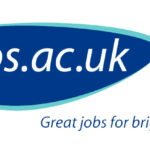Hybrid Modelling Approaches for Moving Fluid-fluid Interfaces Around Solid Obstacles at University of Warwick
Job Description
Supervisors:
Supervisors: Dr. Radu Cimpeanu (Maths), Dr. Ellen Luckins (Maths)
Summary: Interfacial fluid flows around obstacles and through porous materials are key to numerous applications, including filtration, decontamination and manufacturing. For instance, resin must be injected into a porous mesh, without trapping air bubbles, to manufacture composite materials. Interfacial flows are difficult to model and simulate accurately, and in porous media the multiple disparate lengthscales further complicates matters. However, this multi-scale setting also provides beautiful mathematical modelling opportunities. In this project we will develop and use hybrid modelling approaches for moving fluid-fluid interfaces around obstacles, incorporating analytical and computational techniques, to investigate questions such as minimising defects in composite manufacturing.
Hybrid continuum modelling techniques, incorporating both rigorous asymptotic analysis and detailed numerical simulations, have recently been used to make significant advances in the field of interfacial flows. Theoretical progress may be made for porous media interfacial flows by adapting and specialising asymptotic homogenisation (averaging) techniques. This project seeks to combine these approaches in a novel and exciting way, generating a state-of-the-art modelling and direct numerical simulation framework that can also incorporate data-driven elements.
There is potential to explore a variety of specific applications of this work throughout the PhD project which lies at the intersection of interests of enthusiastic specialists with rich experience in both fundamental research and knowledge transfer, and their growing research groups. In addition to the composite materials manufacturing scenario we might look at problems motivated by the chemical decontamination of porous building materials, in the aftermath of a chemical weapons attack. Collaborators at Adjacency (composite material manufacturers) and DSTL (chemical decontamination experts) could provide supervision support through their domain-specific expertise, contribute with experimental data, and ensure access to networks of practitioners in the relevant industrial space.
About the CDT:
HetSys is an EPSRC-supported Centre for Doctoral Training. It recruits enthusiastic students from across physical sciences, mathematics and engineering who enjoy using their mathematical skills and thinking flexibly to solve complex problems. By developing these skills HetSys trains people to challenge current state-of-the-art in computational modelling of heterogeneous, ‘real world’ systems across a range of research themes such as nanoscale devices, new catalysts, superalloys, smart fluids, space plasmas etc. They have recently been awarded £11m to train PhD cohorts in computation modelling.
HetSys is built around a closely knit, highly collaborative team of academics from five science departments at Warwick with a strong track record in leading large projects. With its project partners HetSys develops talented PhD students to push boundaries in this exciting field. The students have the potential to inspire new ideas, approaches and innovation and become future leaders in developing new technologies. HetSys builds on Warwick’s cross-departmental scientific computing research community and the Warwick Centre for Predictive Modelling.
https://warwick.ac.uk/fac/sci/hetsys/themes/projectopportunities/
Previous applicants need not apply.
Additional Funding Information
Awards UK residents pay a stipend to cover maintenance as well as paying the university fees and a research training support. The stipend is at the standard UKRI rate of £19,237. We are unable to accept applications from overseas students at this time.
For more details visit: https://warwick.ac.uk/fac/sci/hetsys/apply/funding/

